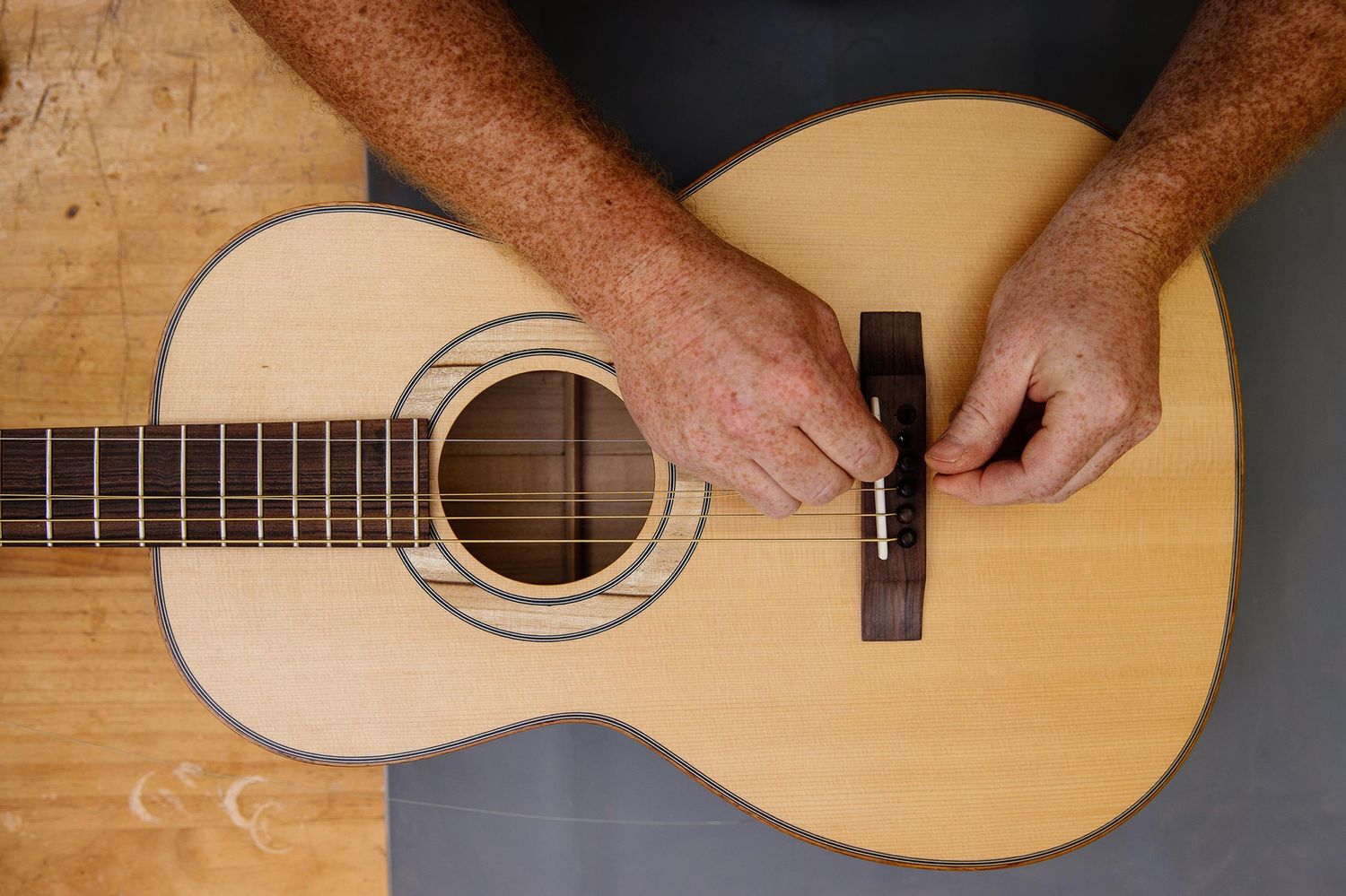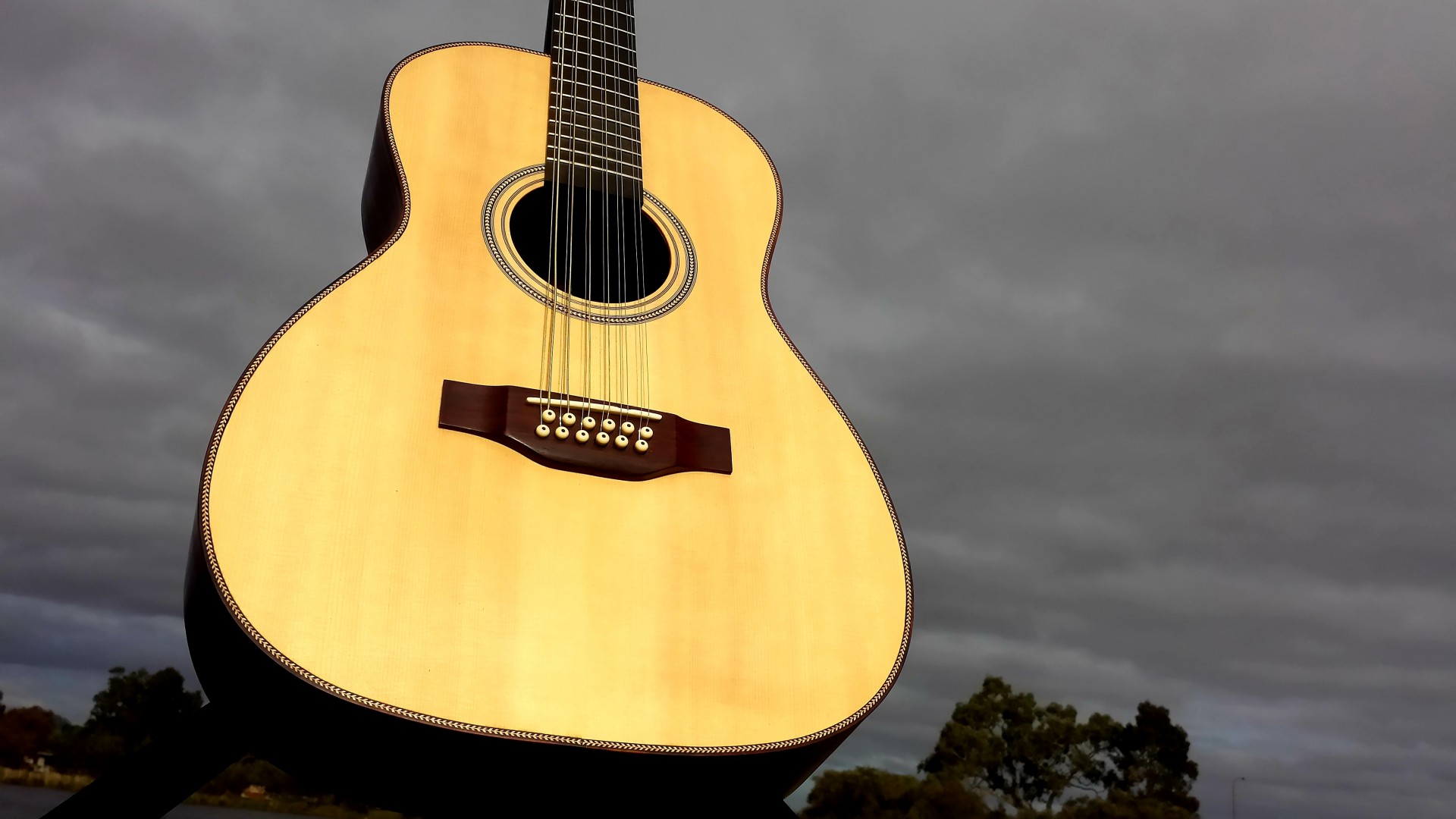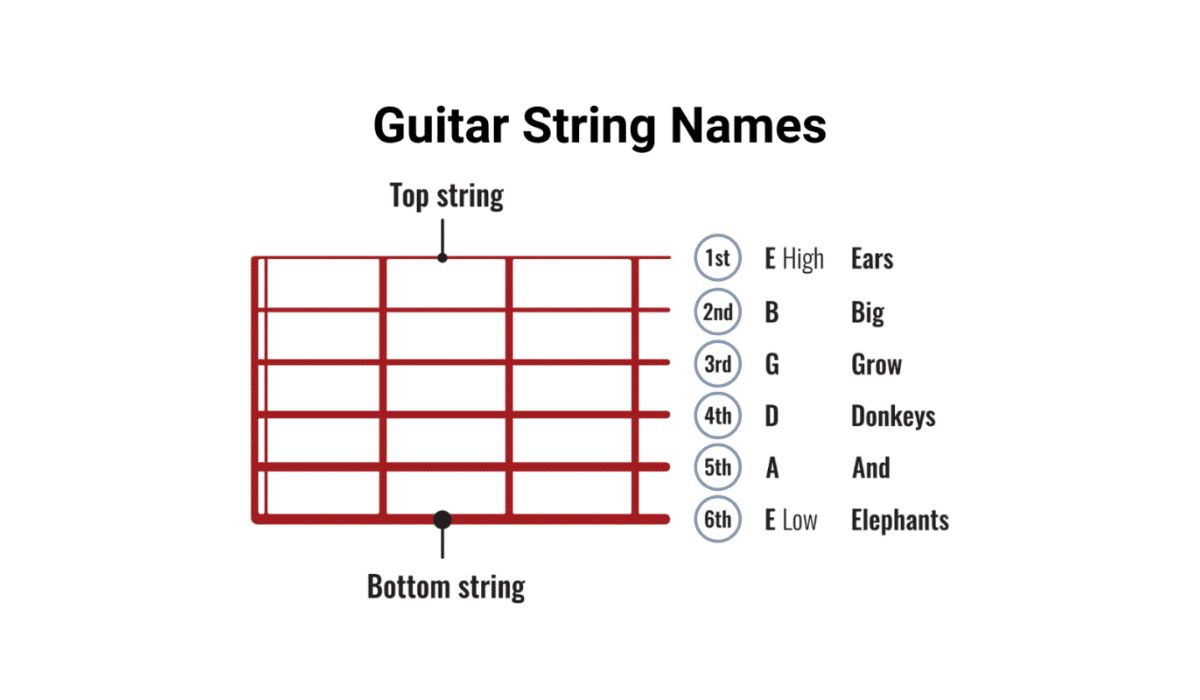Home>Instruments>Guitar>What Are The Guitar String Notes


Guitar
What Are The Guitar String Notes
Published: February 15, 2024
Learn about the guitar string notes and how to tune your guitar. Find out the standard tuning and alternate tunings for different styles of music. Master the art of playing the guitar with ease.
(Many of the links in this article redirect to a specific reviewed product. Your purchase of these products through affiliate links helps to generate commission for AudioLover.com, at no extra cost. Learn more)
Table of Contents
Introduction
Introduction
Playing the guitar is a truly captivating experience. Whether you're a seasoned guitarist or just starting out, understanding the intricacies of guitar string notes is essential to mastering this versatile instrument. The notes produced by the guitar strings form the foundation of every melody and chord progression, making it crucial for any player to grasp this fundamental aspect of the instrument.
In this comprehensive guide, we will delve into the world of guitar string notes, exploring the standard tuning as well as various alternate tunings. By the end of this journey, you will have a deep understanding of the notes produced by each string in both standard and alternate tunings, empowering you to expand your musical horizons and creativity.
The guitar, with its six strings and numerous frets, offers an extensive range of musical possibilities. Each string is capable of producing a distinct note, and understanding how these notes interplay is key to creating harmonious melodies and captivating rhythms. Whether you're strumming an acoustic guitar by a campfire or shredding an electric guitar on stage, the knowledge of guitar string notes is indispensable.
So, let's embark on this musical exploration, unraveling the mysteries of the guitar string notes and discovering the beautiful tapestry of sounds they create. Whether you're a rock enthusiast, a blues aficionado, or a folk music lover, the knowledge of guitar string notes will elevate your playing and deepen your appreciation for the instrument. Let's dive into the enchanting world of guitar string notes and unlock the full potential of this beloved instrument.
Standard Tuning
Standard Tuning
Standard tuning is the most widely used tuning for the six-string guitar. In standard tuning, the strings are tuned to the following notes from the lowest-pitched string to the highest-pitched string: E, A, D, G, B, and E. This arrangement provides a balanced and versatile foundation for playing a wide range of musical styles and genres.
One of the key advantages of standard tuning is its familiarity. Many beginner guitarists start their musical journey by learning in standard tuning, as it is the default tuning for most instructional materials and songbooks. This familiarity allows players to quickly grasp chord shapes, scales, and melodies, facilitating a smoother learning experience.
Furthermore, standard tuning offers consistency across different musical contexts. Whether you’re playing alongside other musicians, following online tutorials, or jamming with friends, standard tuning ensures that you can easily adapt to various musical situations without the need for frequent retuning.
Another benefit of standard tuning is its compatibility with a wide array of guitar techniques. From fingerstyle picking to aggressive power chords, standard tuning accommodates diverse playing styles, making it a versatile choice for guitarists of all levels.
As a guitarist, mastering standard tuning lays a strong foundation for your musical journey. It provides a common language for communication with other musicians, facilitates the learning process, and allows for seamless exploration of different musical genres and techniques. Understanding the notes produced by each string in standard tuning is the gateway to unlocking the full potential of the guitar.
String Notes in Standard Tuning
String Notes in Standard Tuning
Each string in standard tuning produces a specific note when played open (without pressing down any frets). Understanding these notes is fundamental to navigating the fretboard, forming chords, and creating melodies. Let’s explore the notes produced by each string in standard tuning:
- 6th String (Low E String): When played open, the 6th string produces the note E, which serves as the lowest-pitched string in standard tuning. This string provides a deep and resonant foundation for many chord progressions and bass lines.
- 5th String (A String): The open 5th string produces the note A, adding richness and depth to chord voicings and scale patterns. Its versatile tonal range makes it a valuable asset in various musical contexts.
- 4th String (D String): When played open, the 4th string produces the note D, contributing warmth and resonance to arpeggios, chord embellishments, and melodic passages.
- 3rd String (G String): The open 3rd string produces the note G, offering a bright and vibrant tonal quality that complements both rhythm and lead guitar playing.
- 2nd String (B String): When played open, the 2nd string produces the note B, adding a sparkling and melodious character to chord progressions, harmonies, and intricate melodies.
- 1st String (High E String): The open 1st string produces the note E, serving as the highest-pitched string in standard tuning. Its bright and clear sound enhances the upper register of chord voicings and lead guitar phrases.
Memorizing the notes produced by each string in standard tuning is a foundational step for any guitarist. It forms the basis for understanding chord construction, scale patterns, and fretboard navigation. Whether you’re strumming chords, picking out a memorable melody, or improvising a soulful solo, the knowledge of string notes in standard tuning empowers you to express yourself freely on the guitar.
Alternate Tunings
Alternate Tunings
While standard tuning serves as the default starting point for many guitarists, alternate tunings offer a fascinating avenue for expanding the instrument’s sonic possibilities. Alternate tunings involve adjusting the pitch of one or more strings to create unique harmonic textures, resonances, and chord voicings. By exploring alternate tunings, guitarists can unlock new creative pathways and discover fresh musical landscapes.
Alternate tunings are employed across various genres, from blues and folk to rock and experimental music. Each alternate tuning imparts a distinct character to the guitar, opening up innovative avenues for composition, improvisation, and sonic exploration. Whether you’re seeking to evoke haunting open chords, unearth ethereal harmonics, or craft unconventional melodic structures, alternate tunings provide a boundless playground for sonic experimentation.
One of the alluring aspects of alternate tunings is their ability to inspire unconventional approaches to playing the guitar. By retuning the strings, familiar chord shapes transform into new voicings, and standard scale patterns take on fresh melodic contours. This transformative quality invites guitarists to think outside the conventional fretboard shapes, fostering a spirit of innovation and musical discovery.
Exploring alternate tunings also nurtures a deeper understanding of music theory and the harmonic potential of the guitar. It encourages players to listen attentively to the resonant interactions between strings, fostering an intuitive grasp of intervals, chord structures, and tonal relationships. This heightened awareness of musical nuances can enrich both the creative process and the expressive depth of a guitarist’s playing.
Ultimately, alternate tunings offer a gateway to sonic exploration and creative expression. By embracing alternate tunings, guitarists can infuse their music with evocative textures, captivating harmonies, and a sense of boundless musical adventure.
String Notes in Alternate Tunings
String Notes in Alternate Tunings
Alternate tunings introduce a captivating array of sonic possibilities by altering the pitch of the guitar strings. Each alternate tuning configuration produces a unique set of notes, reshaping the harmonic landscape of the instrument and inspiring fresh musical explorations. Let’s delve into the string notes in some popular alternate tunings:
- Open D Tuning (DADF#AD): In open D tuning, when strummed open, the strings produce the notes D, A, D, F#, A, and D from the lowest-pitched string to the highest. This rich and resonant tuning facilitates the creation of lush open chords and vibrant slide guitar passages.
- Dropped D Tuning (DADGBE): Dropped D tuning lowers the pitch of the 6th string to D while maintaining the standard tuning for the remaining strings. The resulting string notes, from lowest to highest, are D, A, D, G, B, and E. This tuning enhances the guitar’s low-end depth and empowers players to craft powerful riffs and expansive chord voicings.
- Open G Tuning (DGDGBD): Open G tuning yields the notes D, G, D, G, B, and D when played open. This tuning configuration, popularized by blues and rock guitarists, fosters the creation of resonant open chords and dynamic slide guitar licks.
- Drop C Tuning (CGCFAD): Drop C tuning offers a lower, heavier sound by lowering the pitch of all strings. The open string notes in drop C tuning are C, G, C, F, A, and D. This tuning is favored in heavy metal and hard rock genres for its thunderous power chords and aggressive riffing capabilities.
Exploring alternate tunings opens a gateway to a diverse sonic palette, allowing guitarists to craft evocative melodies, rich harmonies, and innovative chord voicings. Whether you’re drawn to the haunting allure of open tunings or the thunderous depths of lower-pitched configurations, the string notes in alternate tunings invite you to embark on a boundless journey of musical creativity and expression.
Conclusion
Conclusion
Understanding the intricacies of guitar string notes is a transformative journey that empowers guitarists to unlock the full expressive potential of the instrument. Whether in standard tuning or alternate tunings, the string notes form the building blocks of melodies, chords, and harmonies, shaping the sonic identity of the guitar across diverse musical genres and styles.
Standard tuning serves as a foundational framework for many guitarists, offering familiarity, versatility, and a common ground for musical communication. Mastery of the string notes in standard tuning equips players with the essential tools to navigate the fretboard, construct chords, and unleash their creative vision with confidence and fluency.
Meanwhile, the exploration of alternate tunings opens a gateway to sonic exploration, inviting guitarists to venture into uncharted harmonic territories and discover new dimensions of musical expression. Each alternate tuning configuration unveils a distinct sonic landscape, enriching the guitarist’s palette with evocative textures, resonant harmonies, and boundless creative possibilities.
Whether you’re drawn to the raw power of dropped tunings, the ethereal allure of open tunings, or the melodic richness of altered tunings, the string notes in alternate tunings invite you to embark on a captivating musical odyssey, where innovation and inspiration converge.
As you continue your musical journey, remember that the knowledge of guitar string notes is not just a technical skill but a gateway to artistic expression and emotional resonance. Embrace the rich tapestry of string notes, let them guide your fingers across the fretboard, and allow them to amplify the depth and beauty of your musical voice.
So, whether you’re strumming gentle folk melodies, unleashing searing rock anthems, or crafting intricate jazz harmonies, the string notes of the guitar will remain steadfast companions, resonating with the timeless essence of musical creativity and the boundless spirit of artistic exploration.











